Restaurants That Will Make You Prefer To Eat At Home
The restaurant as we know it today dates back, more or less, to the 18th century. Until that point in our collective history, the whole eatery experience was less high class with waiters and all that racket and more like small primitive bistros where folks would supplement their income by giving travelers and neighbors something to eat. The concept as something along the lines of an actual business is relatively recent. And, it all started, you guessed it, in France. A French chem named A. Boulanger established a small public place – for just about anyone willing to shell out a dime – that sold soups and restorative meals. It offered a detailed menu and one with many options. Not the first to have actually served food in such a manner but the FIRST one to be called a “restaurant” and have a set menu. Boulanger inspired many of his peers down in France, and by the end of the 17th century, that concept had taken flight. It was a huge hit. Nonetheless, health codes back then were a joke. Well, almost everything was a joke back then. It was understandable. Today we’re going to talk about health codes and restaurants through some pretty graphic pics’, while also going you a tour-de-force the history of these bistros.
Pesticide
The word “restaurant” comes from the French verb for “restore,” to revive, to restore. It was a potion used by travelers. Odd, but we truly doubt that when they first came up with the concept, they were thinking of pesticides. This pic’ is so yucky on so many levels.
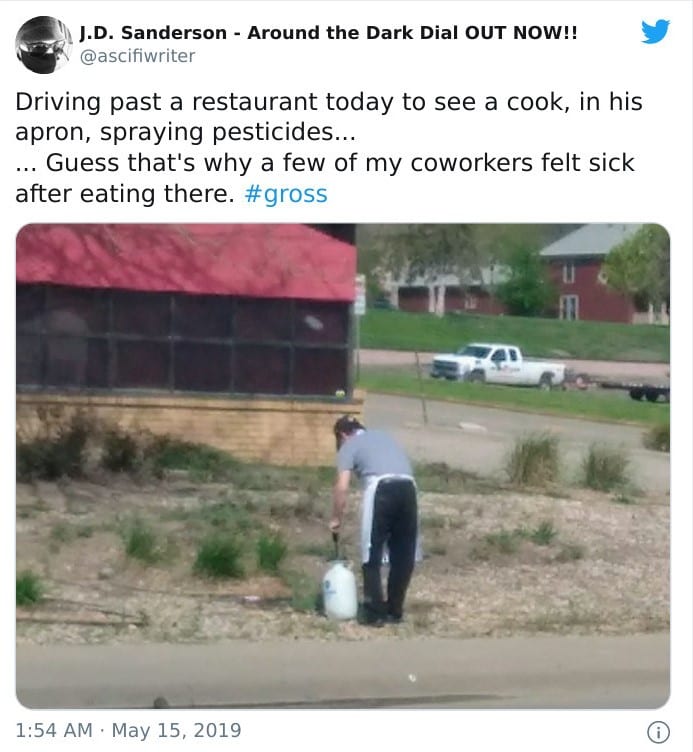
A remedy that is counterproductive is if a cook is spraying toxic pesticides next to the road in the apron he wears to prepare food. It sort of defeats the point of a restorative and the health-inducing nature of a well-cooked meal if the chef, like the one above, is going out of his way to intoxicate his patrons.
Lettuce
Back in the early days, they didn’t clean anything. Why? Water was really expensive, clean water that is. People used to clean their veggies with gin. Well, that would have been better than that scene from down below. You can practically see the bacteria crawling.
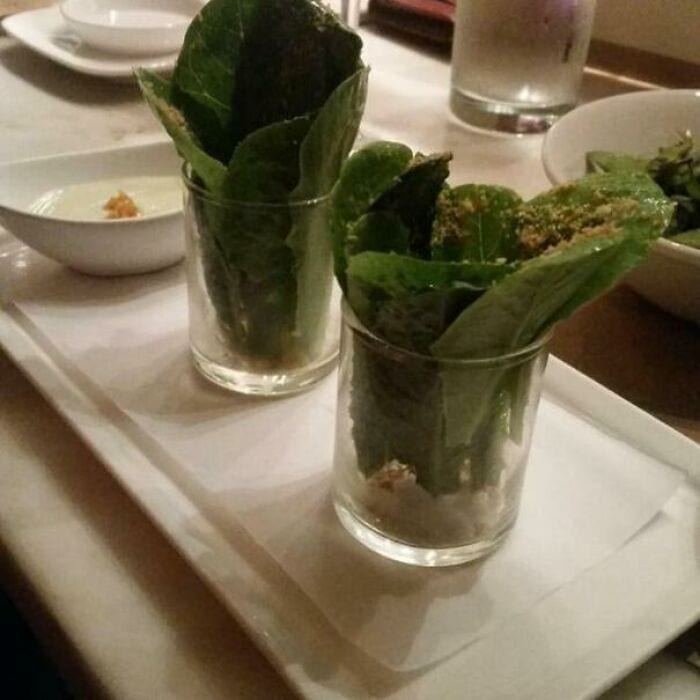
Imagine the look on your face that you would get when it turns out you ordered a side salad and get that off-putting monster from up above. Day-old lettuce that has never been washed, and it’s just sticky with yuck. Absolutely gross! Horrible.
What Madness
Some images are vomit-inducing. So, take that warning to heart, please, cause this article is full of them. We think that below is just nasty. What is that clam-chowder or just a very heavy coffee and cream? What sort of sick individual left that on the table? Nasty.
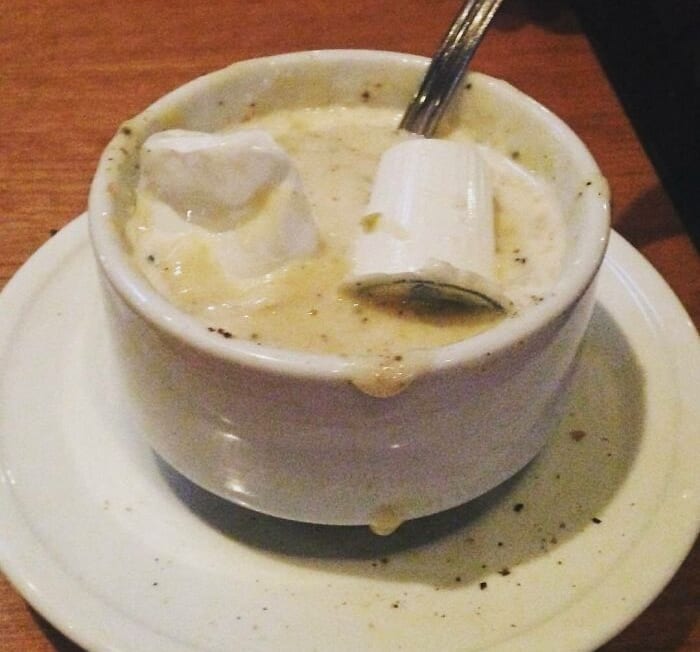
There’s nothing better than a good cup of JAVA. Really jolts you awake. But that cup from up above is, is a serious wake-up call. One that would jolt anyone awake. Not on because of caffeine but simply because it’s a nightmare that comes to life.
Public Notice
Well, in 1765, A. Boulanger went into business, and the restaurant opened. He started selling soups, and tarts, and drinks like hotcakes. Inspections like the one below weren’t even on the menu. It was a Mad Max free-for-all. His peers took notice, and overnight, there was an explosion of these types of eateries.

There’s nothing more welcoming than stumbling into your local restaurant of choice and gazing at a notice like the one pasted up above. It really seals the deal. What’s worse, if you take a moment to really look at the image, is the fact that someone tried to pry it off.
No Mask
The epicenter of that culinary explosion was the City Of Lights, Paris. All around the Seine, small bistro and cafes opened up along the Port Neuf and the Palais du Luxembourg. Paris is one of the cities that was hit the worst by the COVID pandemic, and the entire planet has been affected. So seeing the below sign anywhere in the world these days is just shocking.
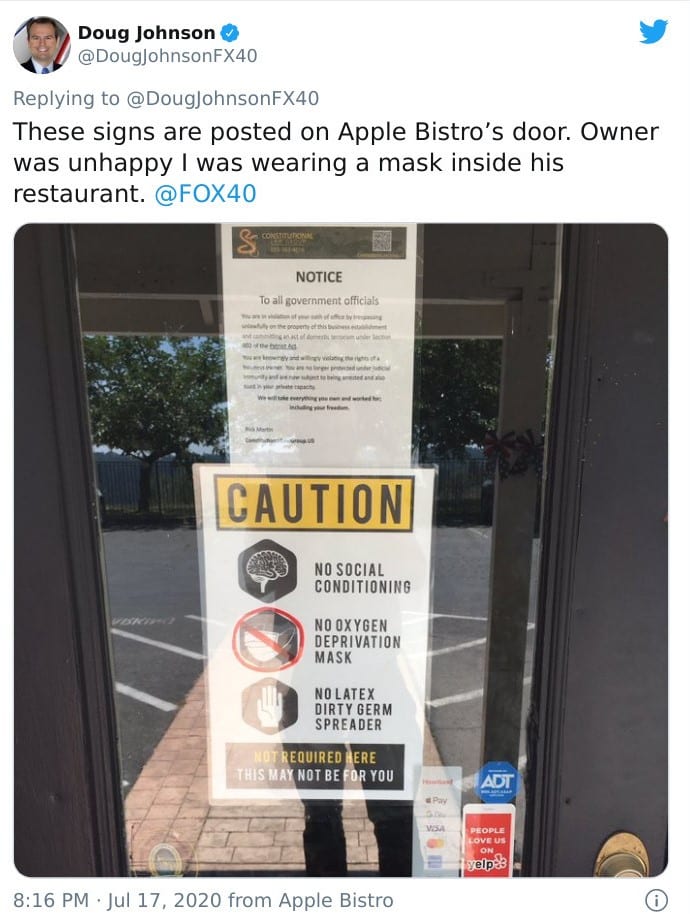
With COVID on a rampage, you really have to take care of your health and the health of those around you. So it’s absolutely incredible that cafe and restaurant owners have actually pasted signs into their window telling patrons to NOT come into the restaurant with a mask.
Flies so many flies
A game-changer occurred, less than 20 years after Boulanger, “La Grande Taverne de Londres” opened up in Paris. The place was a chic’ little joint founded by Antoine Beauviller in 1786. It was the “first real restaurant” and became the standard for French culinary arts. We cannot say that would have happened if the below was hanging over the heads of patrons.
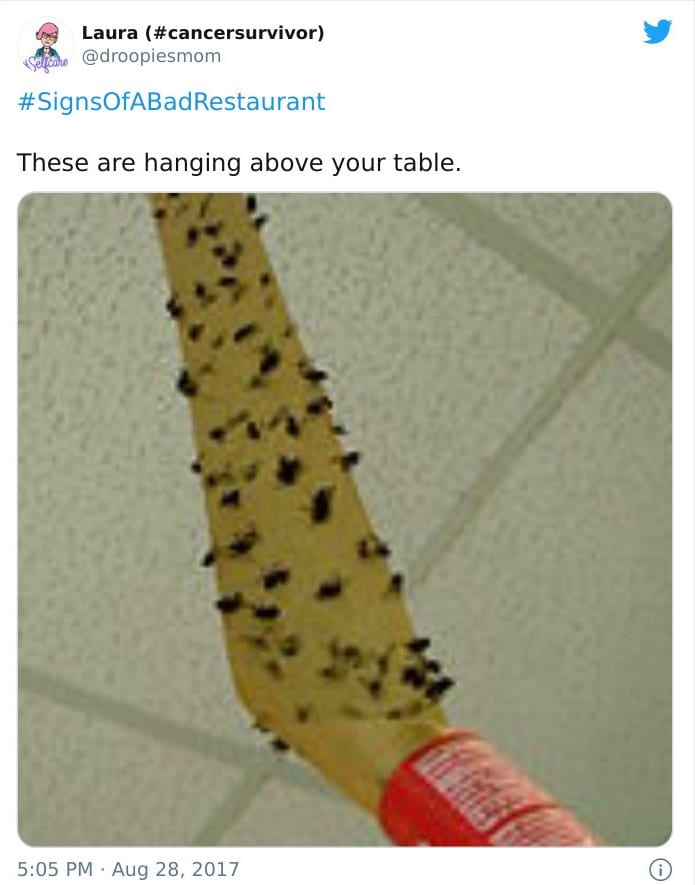
Even the “first real restaurant” had better eating and health standard than that monster from up above. Really, what is up with that? Let’s be absolutely honest you really have to have no sense of decorum or taste to allow something of that nature to take place in your business.
Ketchup?
What exactly made “La Grande Taverne de Londres” the first real restaurant? Well, according to gastronomic chronicler Brillat-Savarin, this was “the first to combine the four essentials of an elegant room, smart waiters, a choice cellar, and superior cooking.” And nothing nowadays screams elegance like Ketchup bottles in the bathroom.
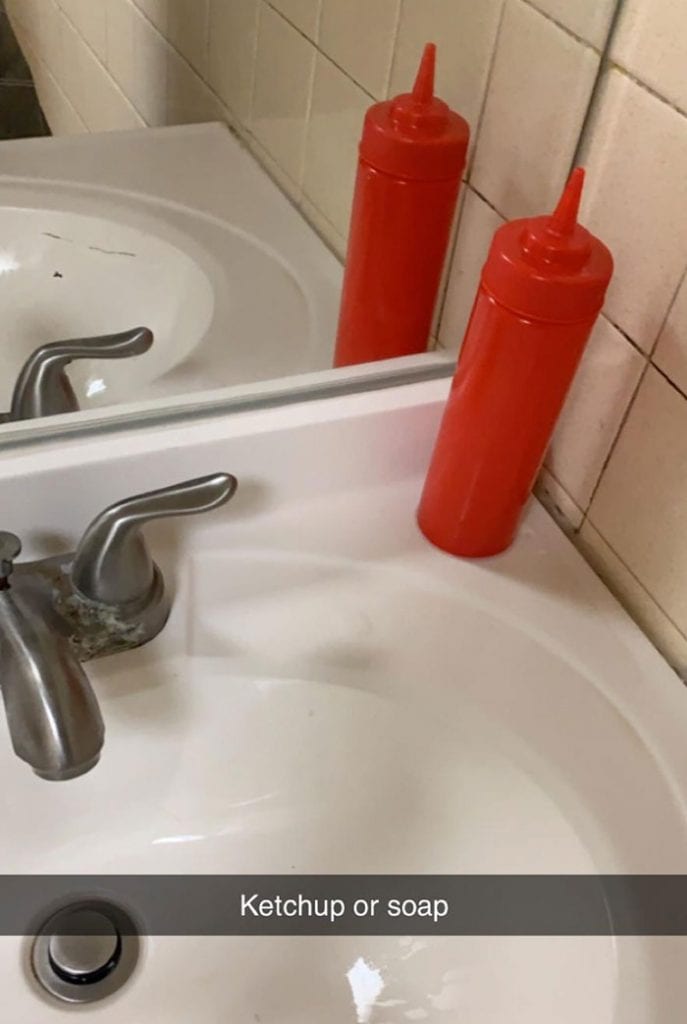
We’re really at a loss for words as to that pic’ up above. Is that soap or Ketchup? If it is soup, then BY ALL MEANS, it is one of the most ingenious dispensers out there. Very hipsters, and the person who thought it up deserves a standing ovation.
Service Not Included
Then, something even more audacious took place, the Bastille was taken, all hell broke loose, and Kings and queens lost their heads. That’s right! The French Revolution. And that’s precisely how we feel when a service charge is added to our bill, like going gonzo on the restaurant’s overlord.
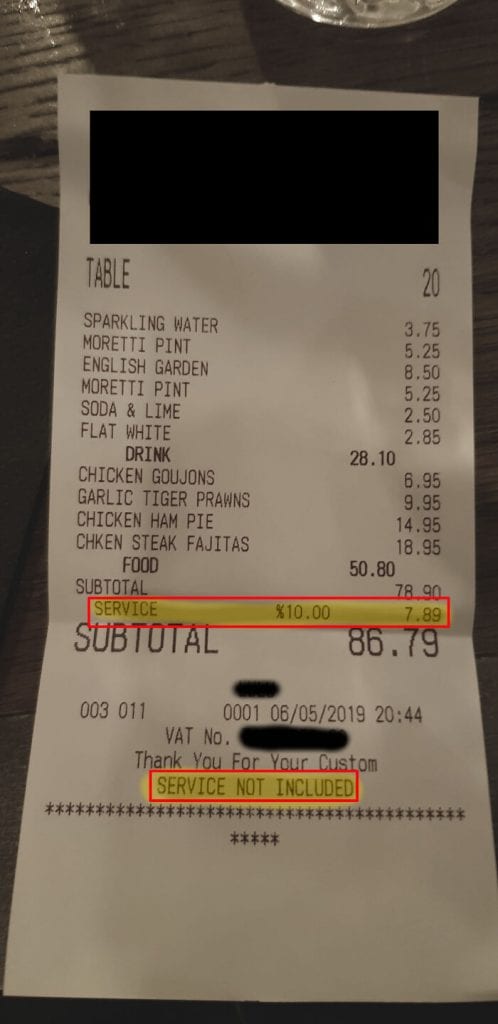
We’ve all gotten it sooner or later. A bill or receipt that makes absolutely no sense. It’s part of the whole experience of going to a restaurant, looming over that little piece of paper, and working out if you’re getting stiffed somewhere down its tally.
Tips
Up until the Fence Revolution, there were some, but not too many, restaurants. Why? Aristocratic French households minted elaborate culinary practices and establishments within their walls. Why eat outside when you had your own personal chef? Why submit yourself to something like the pic’ below?
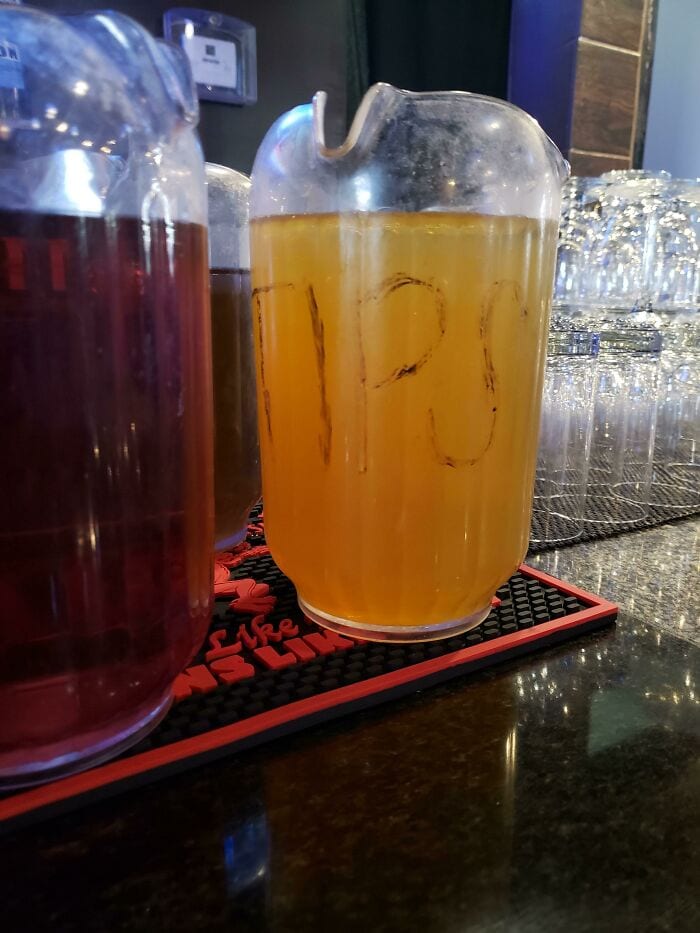
And even those personal chefs got tips. Did you know that most waiters and staff need tips in order to survive financially until the end of the month? Yes, they require those extra bucks because what their job gives them is not enough to survive on.
Screw loose
Well, the Revolution sort of got rid of those aristocrats, and suddenly thousands of seasoned chefs were out of a job. Households went belly up, and with it, millions lost their jobs. Including chefs, cooks, cleaners, and majordomos. The perfect storm. And the only job in town? Bistros. Even a few handymen started in on the gig, and we are certain that stuff like that below happened constantly.
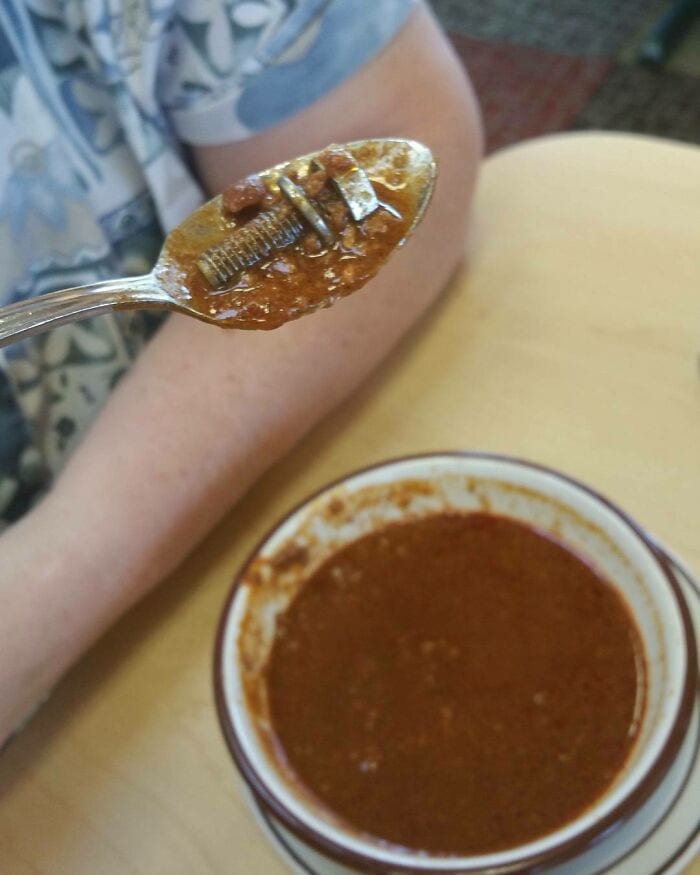
There’s nothing more aggravating than finding something odd in your bowl. In this case, something that could have really hurt you and sent you to the emergency room. That image above is an eye-opener as to the level of mismanagement some restaurants have to deal with. Really troubling indeed if you ask us.
Tipping
Many resorted to making their own collective. They started forming bands and buying up cheap real estate around the cities, and particularly in Paris. By 1804, there were more than 500 restaurants in Paris. Most survived on tips. The staff didn’t get any pay. That sort of became illegal until that pic’ below said otherwise.
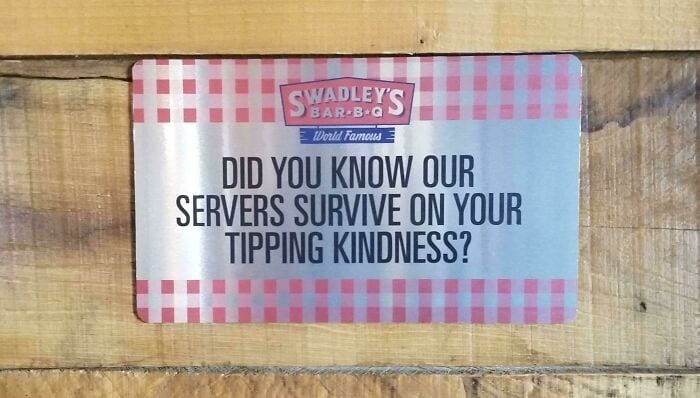
And tipping, particularly the staff, became the norm. So much so that some establishment didn’t pay their waiters at all. That was in the old days, so it’s somewhat strange to see a restaurant boast the fact in the present that it pays so little that their employees can’t survive unless you give them a tip.
Extra charge
And it doesn’t stop there. Meanwhile, the brainchild of this whole movement, Antoine Beauviller, a brilliant businessman, became the icon of this culinary bombast. He implemented guidelines. Amongst them: “clean utensils” certain restaurants are behind on the curve on that ideal.
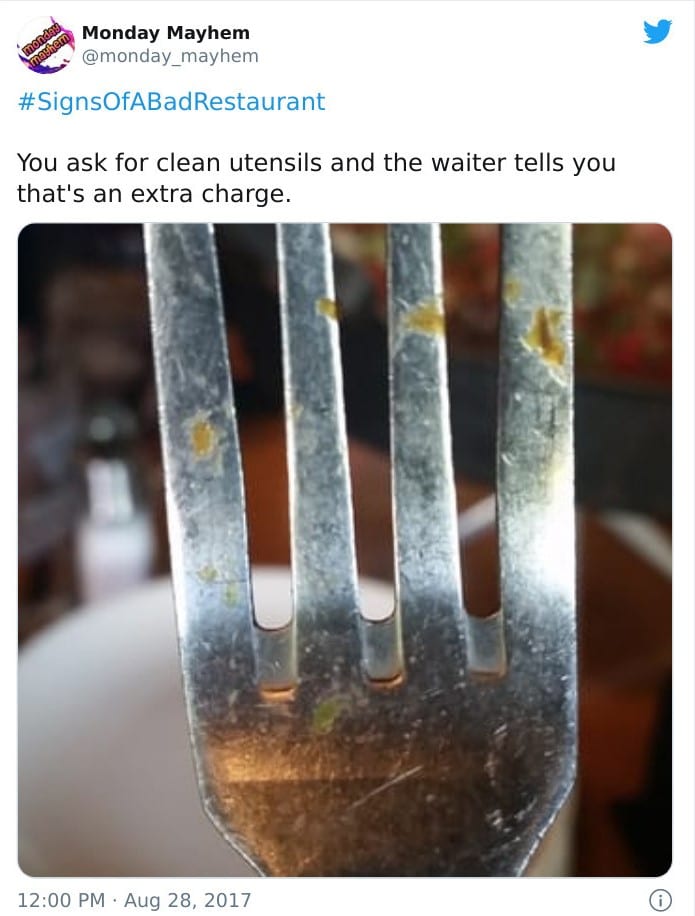
And as modern diners, we can only imagine a picture like that one above would have even horrified Antoine. How can a restaurant ask for an extra charge for a clean fork? It’s unheard of! And that fork, let’s be honest, looked like it was dunked in a toilet.
Curtains
Beuviller was such a great businessman that by 1814 he had a magazine devoted to the art of cooking and even a cookbook “L’Art Du Cuisiner” that was a detailed instruction manual and the standard for French cuisine. Those standards also talked about the decoration. Things like, don’t use your underpants as curtains.
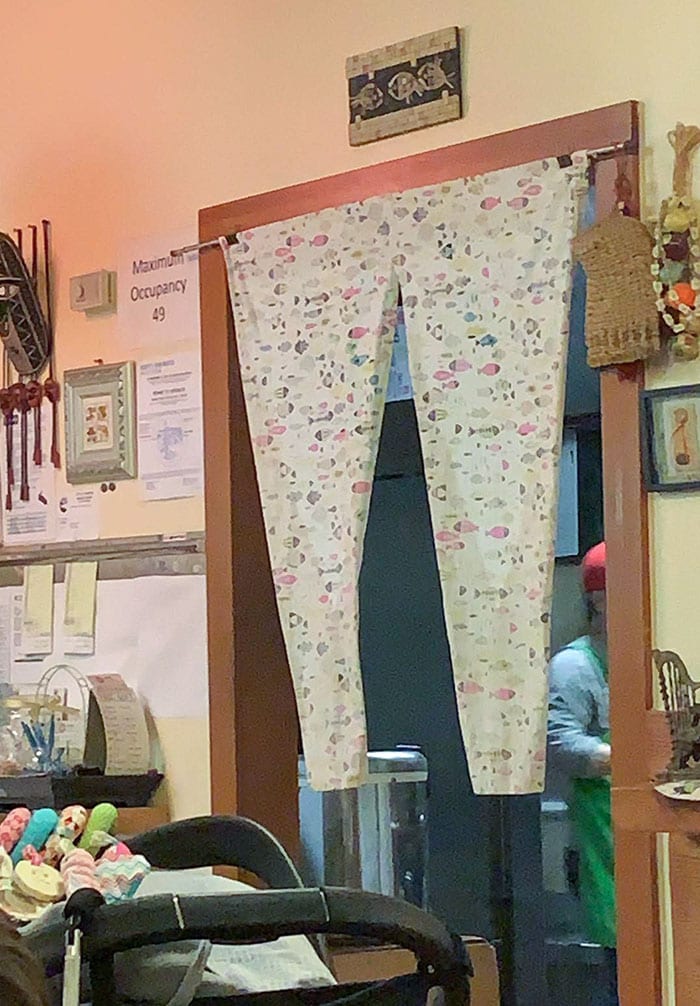
In that manual, which had some entries about decor and etiquette, we doubt there was a mention on how to use your pajama bottoms as bivouac curtains. You really have to tip your hat to some proprietors; that above is just silly.
Cleaning the ceiling
And word spread out during the Napoleonic Era. Places like the Palais-Royal, a tree-lined colonnade near the Louvre, became Paris’ hippest district, which is now frequented by the Instagramers and celebs of the year. And cleaning became a priority. Only, back then, it was with vinegar and soap. Not like today with toxic materials. That’s why that photo below is concerning. Yuck!
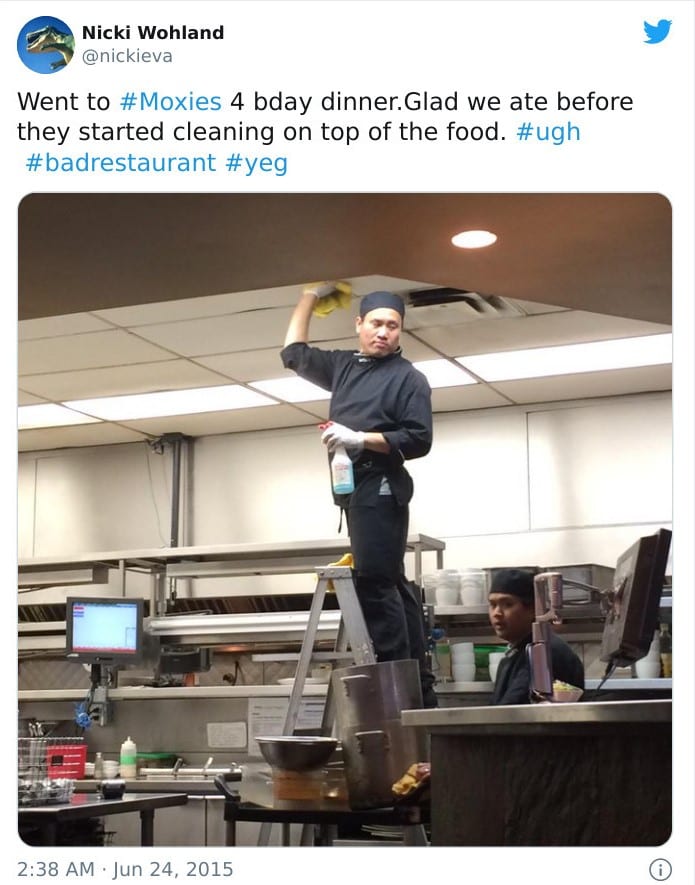
And they were, for the most part, incredibly clean. That above is a picture of a place that has its health values on straight but lacks commonsense. Waiters and staff cleaning with toxic chemicals right above the food preparation area. A total disgrace.
Meat
Novelists like Honoré de Balzac often dined in the Palais-Royal, and people would flock to eateries like Véry just to catch a glimpse at some of their idols. Proteins were valued commodities. And the way meats were prepared was a huge point of pride for a bistro—no slicing it up in the parking lot.
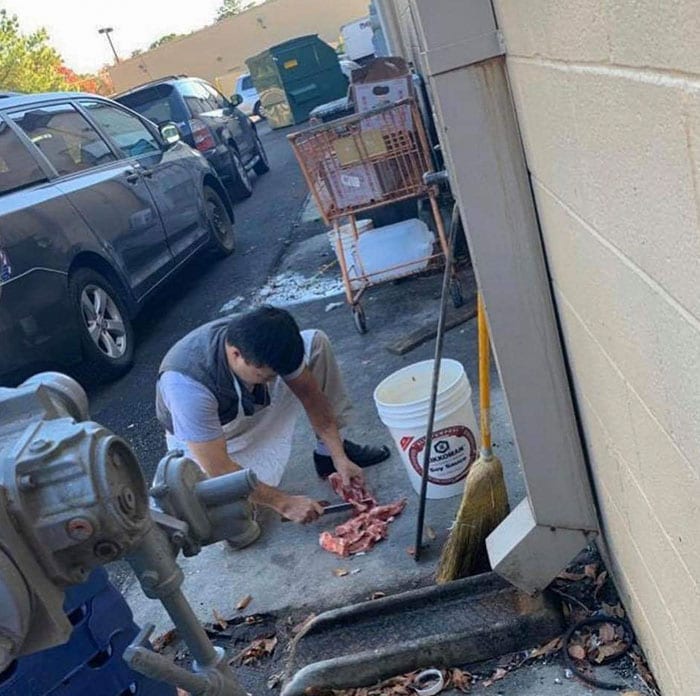
They say heat and fire kill most germs and eradicates bacteria, but you really have to hand it to the good folks at this Chinese restaurant with their desire to prove that fact right. It’s fascinating how someone oddly does that and still not bat an eye.
The Salad
Just to put it into perspective, while Paris was revolutionizing the kitchen and making art out of food, most other places in Europe were making a pig’s breakfast at what even swine wouldn’t eat. Salads in British Islands were atrocious, as scarce and almost as feeble as the one below.
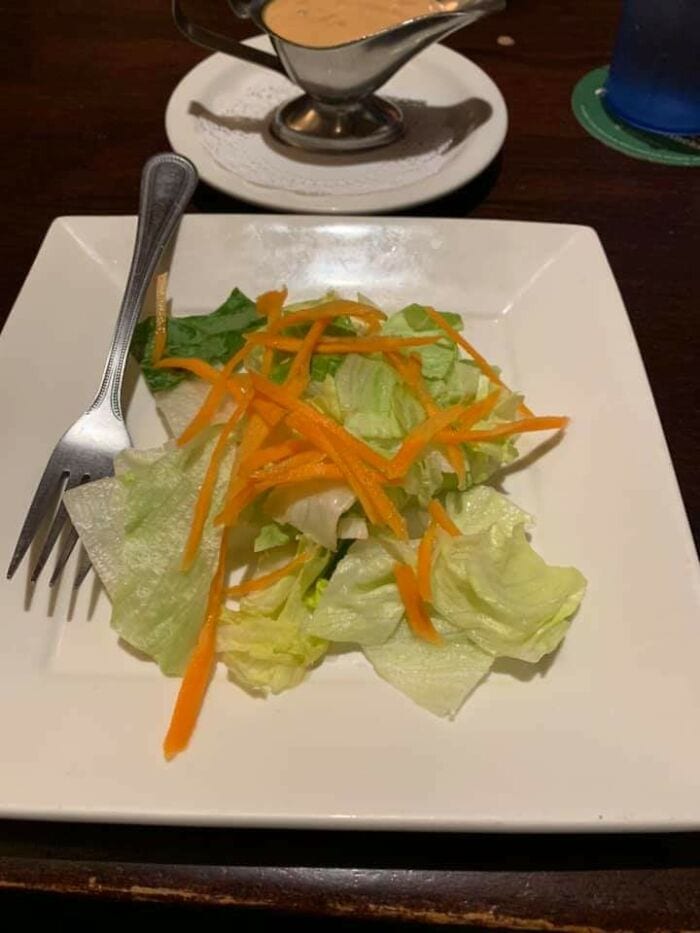
And, like that pic’ above, in most places, a salad was just whatever veggies and green leaves were laying around the kitchen. There was no dressing or mouth-watering fare to accompany the salad, just whichever greens were handy. And don’t get us started about the grimy plate either… Gross!
Mac and Cheese
Paris and France as a whole became the beacon for some of the best cuisines on the planet. And they brought in a lot of practices from Italy. Particularly pasta. Parisians love pasta. The much loved Mac & Cheese was inspired by their sauces.
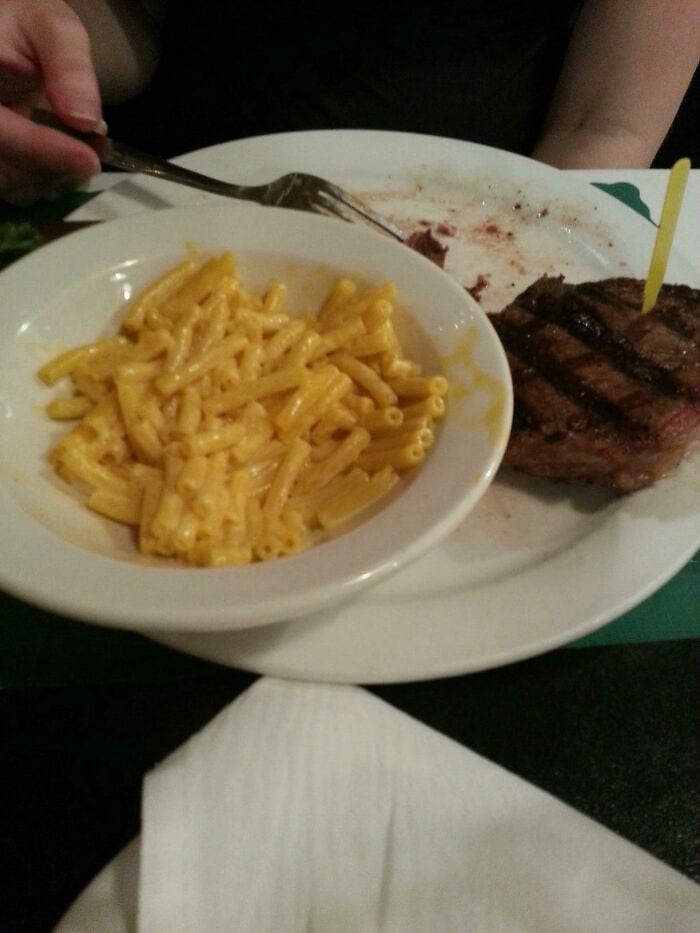
Chefs that would oftentimes redefine the whole experience and make art out of whatever they had handy. Chefs that would have had a heart attack if their bistros main dish, their golden child, were nothing more than a burned-up piece of meat and some oily mac & cheese.
Sauce
Not only that, but many started to do wild sabbaticals in lands like Italy and India, and China, bringing with them radical notions on food that surprised the Parisian natives. They started importing spices and making outlandish sauces. And people would go insane for those sauces.
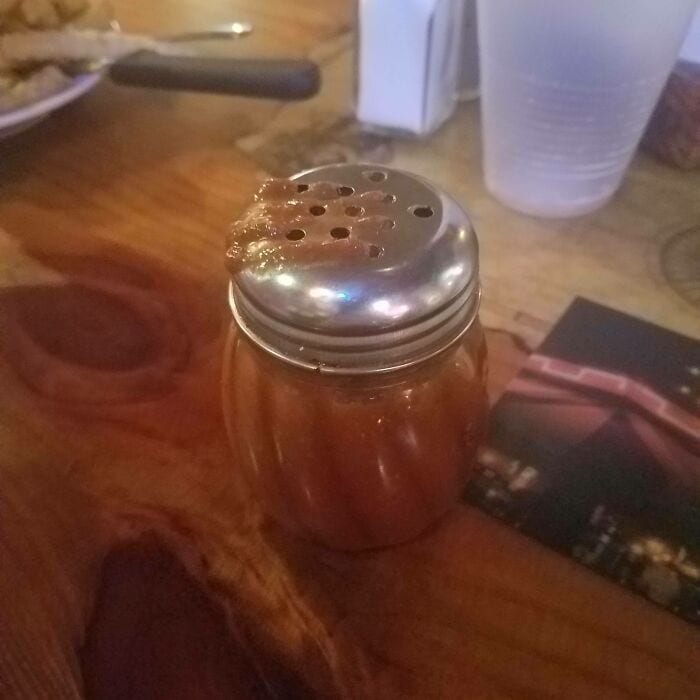
And sauces and spicy salsas became the trend. They still are in most countries around the world. There are places that love to boast about how their salsa can make a grown man cry. Still, like the image above documents, presentation is critical.
Loaded potatoes
And the Americans, where were they in all this mess? They were well behind the bell-curve. While Paris was making history, the Yanks were having a bit of trouble back home. At the most, they had a diet based on potatoes and meats. Dairy products were also a huge hit. Put them all together, and BOOM, the loaded potato.

But back then the culinary fare that would ultimately define the Yanks was along way from being produced. Loaded potato jackets with bacon and cheese were a distant pipe-dream. And, as that image above tells us, in certain chain restaurants, they currently still are.
Dumpster
The USA had debts no other man could pay and was constantly at war with the Spanish, and The French, And the Brits, and, well, just about anyone that could hold a big stick against the fledgling nation. They really had no infrastructure. They didn’t even have sanitation workers. Sanitation, something expected in other places of the globe, wasn’t even on their radar… Not like it is now.
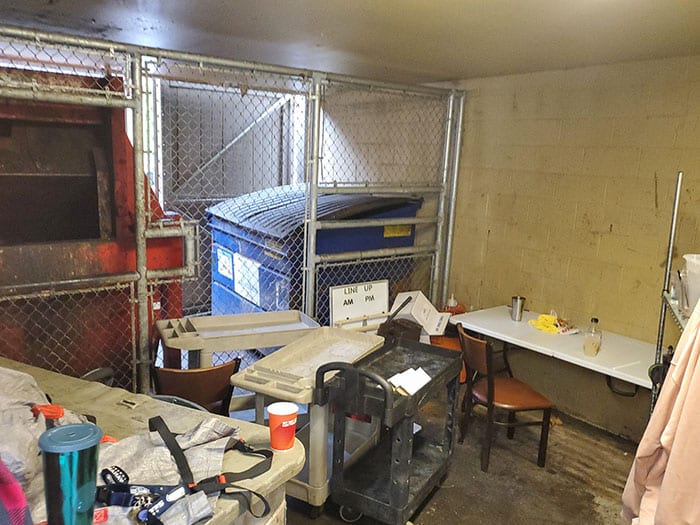
Can you imagine coming into a restaurant and discovering that their dumpster is next to their barbecue? The fire pit less than a meter from where the restaurant chucks all its trash? Sure, it must be handy for the cook, but it leaves a lot to be desired as far as hygiene standards are concerned.
Mice
The first real restaurant in the US originated in 1849, during the Gold Rush in San Francisco. It was a self-service joint near a frontier town. The place was full of scoundrels and rats. The bistro had a huge vermin infestation—one of the worst.

Yes, that a mouse. Or a small rat. We’re not entirely certain of its rodent heritage. Ghastly. This is the sort of picture that could and should shut a place down for good. Right next to the pizzas and enjoying a mid-day snack of quiche Loraine.
Toilet
The idea of a classy restaurant wasn’t really at the forefront of much of the USA’s interest back then. And it wouldn’t become an attractive option until the late 1950s. Yanks just wanted a place to eat fast and take a toilet break. Most bistros were just that, a stand next to an outhouse.
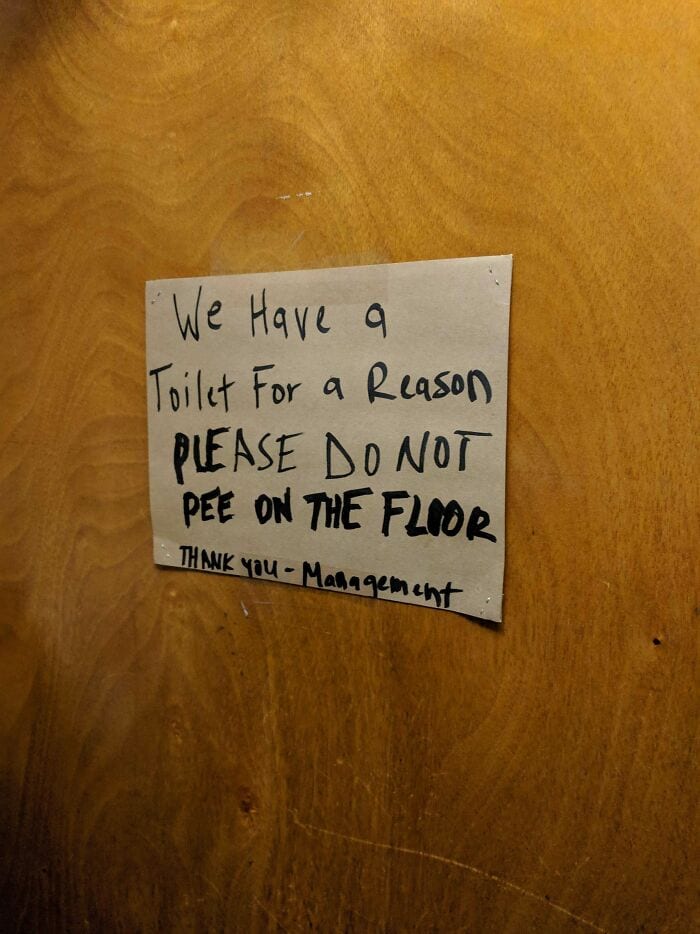
And sometimes it’s not the managers’ or the owner’s fault. Sometimes the patrons are just disgusting animals. Is it really necessary to have to write a note like that? How hard is it to use a toilet? It’s one of the first things we are taught.
Yes/No
What the Yanks did do, was spearhead and make widespread the idea of environmental health officers, or how we normally call them “Health Inspectors.” Up until the late 19th century only the UK had a division of labor whose goal was keeping taps on health issues in the workplace. They used guidelines, in the beginning, like the one below, to teach the public.
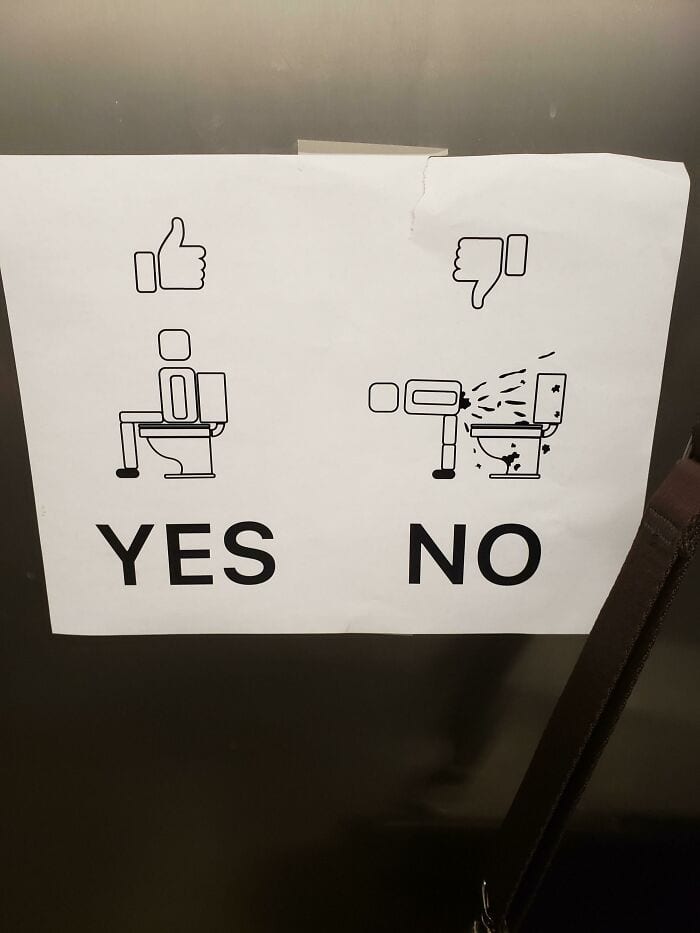
And, it was imperative when managers and restaurant owners had to deal with a public that needed cue cards like the one above on how to act civil. Poor cleaning staff that had to deal with such disgraceful behavior. We honestly have a hard time believing that any eatery would need to take such drastic measures to keep the place clean.
Sincerity
Regulations about health issues can be traced all the way back to 1840 to a man called Edwin Chadwick. Edwin was a Poor Law Commissioner that worked for the state and was tasked with a research grant. He wanted all places to be sincere concerning their status of work and sanitation practices.
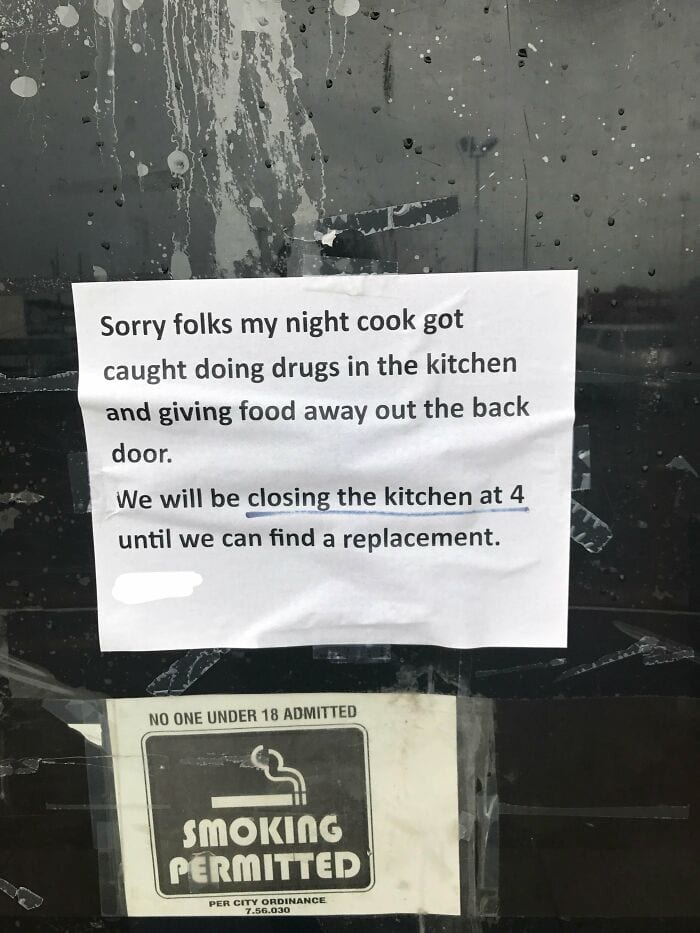
Whatever you might think about that establishment up above, you really have to give the owners props for being absolutely sincere about their woes. They are not shying away from the whole ordeal and are owning up to the scandal in their kitchen.
Nail
Edwin had to uncover why people were poor. Easy, right? Well, Edwin faced the task with a county vigor. He went out of his way to really unearth what the problem was. And the first place he visited was restaurants like the one below… And he was shocked.
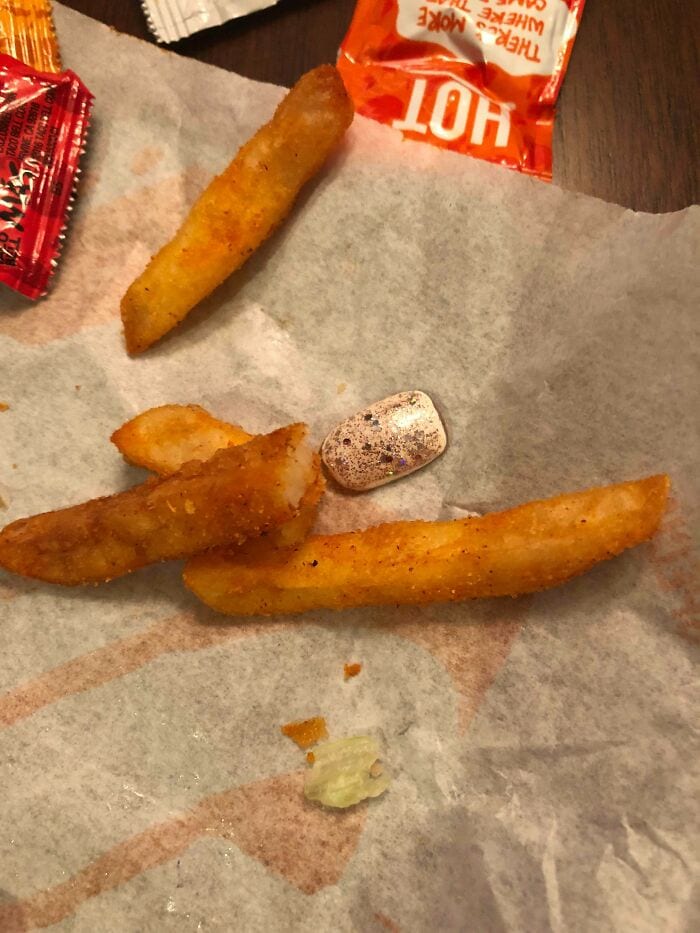
Restaurants nowadays have strict bylines that most employees should follow—nonetheless, some of them sort of turning a blind-eye to such rules. Chain restaurants and fast-food joints are the ones that have the most significant amounts of health code violations.
Taking a rest
Edwin concluded that the main cause of poverty was ill-health due to an unhygienic environment. He was certain that there was a vicious cycle and that improving sanitation in key areas could, in fact, make a stronger workforce. He started to enforce practices onto workers—particularly the idea of washing their hands. Guess someone should have informed the guy below about such standards of keeping good hygiene.
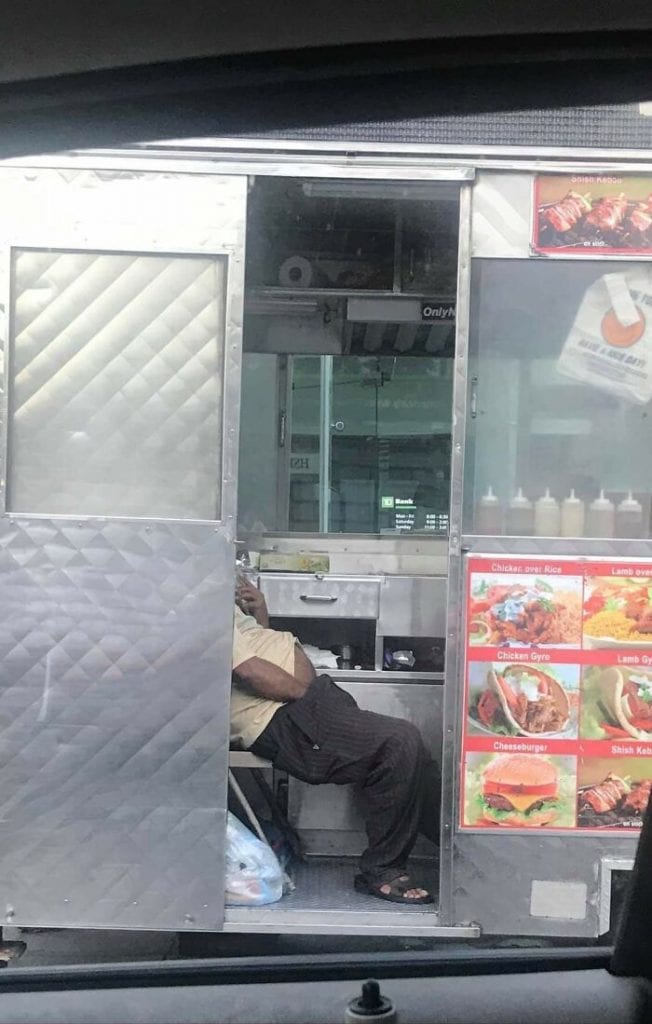
And a stronger, healthier workforce was the ideal. Britain could conquer a planet and expand its empire if its workers were better. Places had an incredibly lax approach to any type of sanitation. And that still applies in many parts of the world, as that picture above shows us.
Trash Can
There were Inspectors with authority to shut down any establishment of business with an unsanitary work environment. And they still do; they scour not only restaurants but reviews and social networks for violations like the one below. Taking notes and printing out fines.
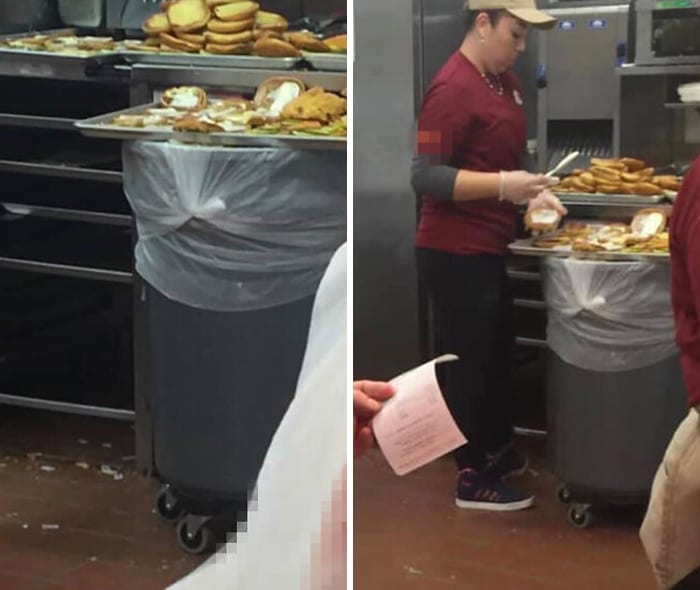
Chadwick led a campaign and eventually won over his overlords. One were scenes like that above wouldn’t happen. This resulted in the Public Health Act of 1848, the first of its kind. The act appointed key inspectors or how they were called back the “Inspectors of Nuisance.”
Handprint
Over time, these Inspectors Of Nuisance became the forerunners of what we normally think of when we imagine a health inspector. In The USA, they saw the merit of the Brits’ lockdown and strong-arm tactics. People were getting sick, particularly in the West, because of practices like the one photographed below.
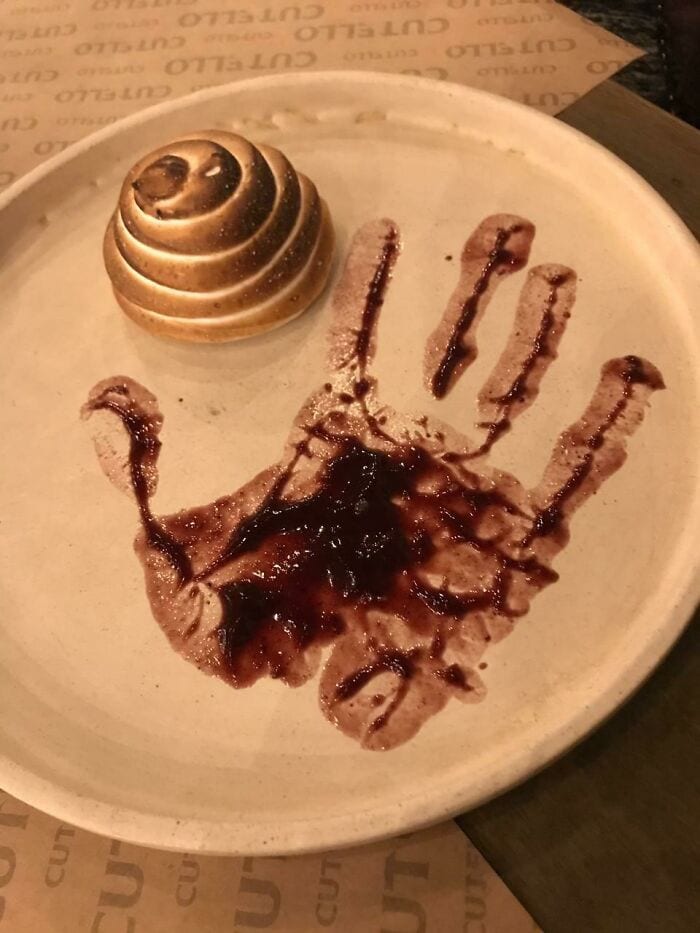
Not only could the budding nation protect its citizens, but it could also make a profit – through fines – in the process. Fines, how many do you think that restaurant above warrants? We mean, is that decoration or an accident? Fines that restaurants like the one above were constantly getting.
Street Art
Did you know that 66% of folks are unwilling to revisit a restaurant if they happen to spot even the most basic or unimportant bad food hygiene infraction? We’re not talking about something like the pic’ below but something far more innocuous. That below is just stage dressing for a dive bar bathroom.
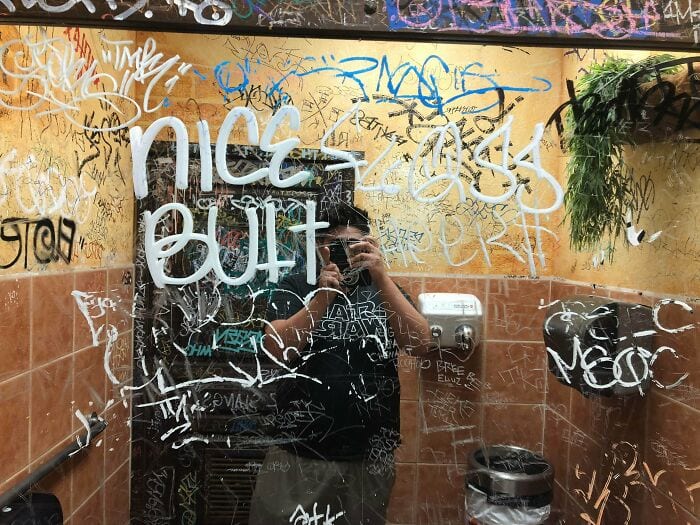
Some restaurants have embraced the idea, if you can’t beat them, well, you might as well join them. That’s why the dive concept of the bar has such great appeal. Even street art in the bathrooms is encouraged by the management.
Chicken Tenders
Most restaurants, with just one bad review that makes a bad hygiene remark, can suffer from huge losses. Losses that can actually end up shutting the restaurant due to a lack of traffic. And with social media, as it is, these reviews can be devastating. A picture tells 1000 words. What does the one below tell you?

We know that those chickens will no doubt be fried to a crisp, and whatever bacteria they might have gotten from that shoe would most likely turn to dust, but at least act as you care about a place’s reputation.
A few main factors can destroy a restaurant’s proceeds and ultimately hurt their bottom line; the first is hygiene. The other two? Slow service and small food portions. The quality of the food or whether it tasted good or not come in at a dead last. And most restaurants seem to take a lag approach towards this critical factor. The main problem they face is with their employees. They have to act fast and have little oversight. It’s a tough combo to deal with and one that’s become ubiquitous.
Rats
Cleanliness is next to godliness for most restaurants. Nonetheless, a 2009 study reported that it is the last factor most restaurants take care of. Cleanliness and great hygiene are mostly put on the back burner and rarely taken into account. Vermin control, particularly in cities, isn’t even considered. Most restaurants have problems with rats. Just watch that great Pixar movie to get an idea of what we’re saying.
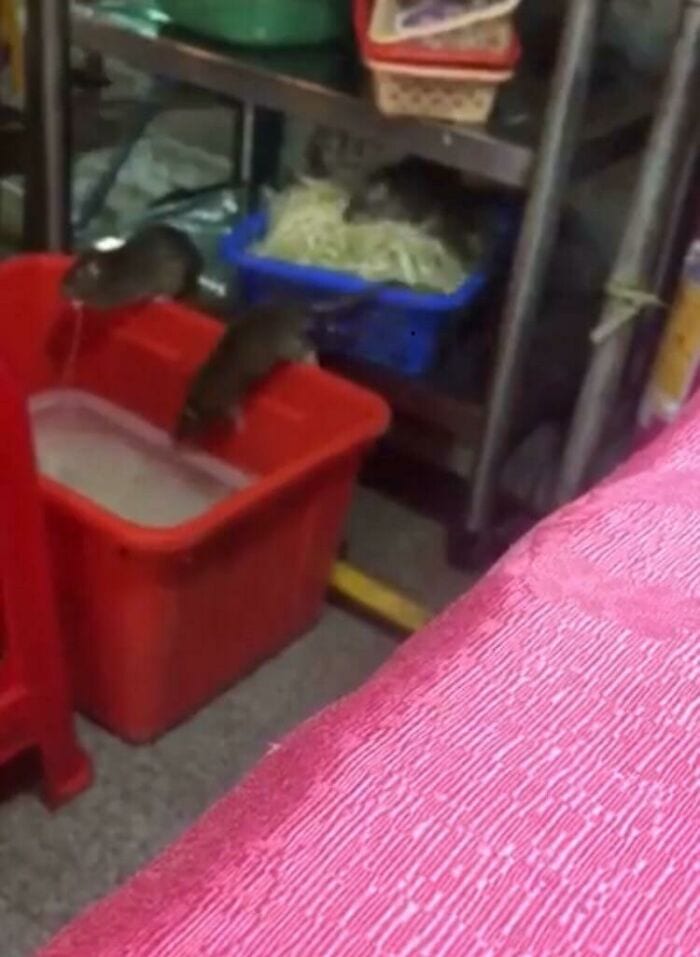
And rats, like the one above, proliferate in these establishments. In many cases, restaurants are shut down because of rodent droppings. A photo like the one above would warrant the place getting inspected and almost definitely being closed, and its management sacked.
A Bath
85% of restaurants have taken a stance of “do more with less,” a practice that often affects cleanliness. They hire less able bodies to take care of the problem and make less effort to actually confront health-code violations. And not only that, they require more and more from their staff. Some don’t even have time to take a bath… and well, they improvise.

Or in the case above, employees have gone out of their ways to really make a mess out of their workplace. How could, and for that matter, why would a person think it’s alright to take a bath in a restaurant sink? That’s just icky and wrong on so many levels.
Nasty
In many cases, most restaurants believe it’s easier and more cost-efficient to pay a fine than implementing an actual plan on how to face their hygiene challenges. Oftentimes the fine, if it ever comes, is less than the monthly maintenance fee for cleaning supplies. And, their staff can’t even take sick days. Why? Cause they will be replaced at the drop of a hat. That’s why things like the pic’ below happen often.

And most restaurant owners are woefully unaware of the way their staff behaves. For example, that photo above was actually posted by that doughnut shop. Everyone, not only the person who took the pic’ but their social media manager, is blind to what was obvious to the rest of us, which is to avoid this place like, well, the plague!
Clipping Nails
And how important is food safety and preparation to our overall health? What sort of maladies are we facing when restaurants, like the one below, play fast and lose with our health. Well, here are some surprising facts. Get ready for a shock.
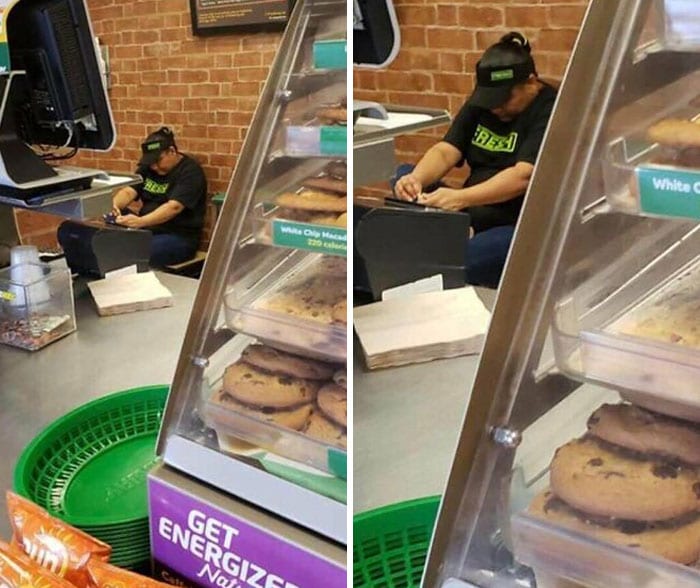
That’s a Subway employee clipping their toenails while on a break. Did you know that fast-food chains have the most amount of health code violations out of all FF Chains? Well, almost all fast foods, surprisingly Mcdonald’s is extremely sanitary compared to its peers.
Out In the Open
More than 200 diseases are spread through food. A WHO study declared that 1 in 10 folks fall incredibly ill every year from eating contaminated food. And, worse, more than 420,000 people die as a result. It is particularly harrowing for kids under the age of 5. And most contamination comes from the defrosting process—scenes like the one below are a breeding ground for E-coli, and are right out of a food poisoning horror movie.
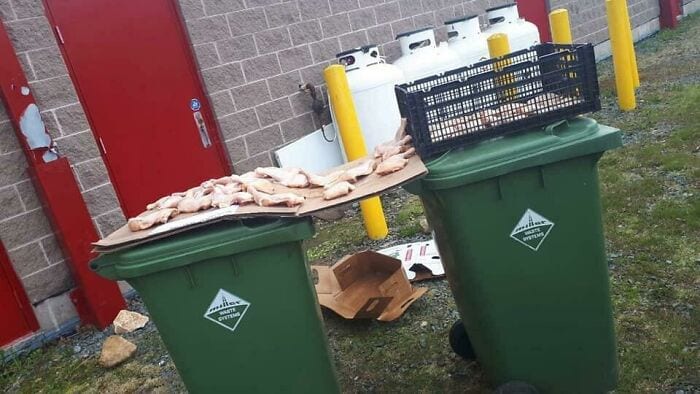
And most diseases come from the incorrect handling of food. Like the pic above tells us, most restaurants do not consider such things as proper conservation of food. Chicken and pork are extremely susceptible to bacteria and oftentimes salmonella outbreaks are caused by mishandling.
Scratching
Contaminated food can actually cause long-term health issues. Aside from stomach pains, diarrhea, and vomiting, toxins and bacteria in contaminated food can cause neurological disorders and even cancer. And most food becomes contaminated when it comes into contact with a server’s hands. Why? Just look at the pic’ below and get an idea of a server’s view on sanitation.
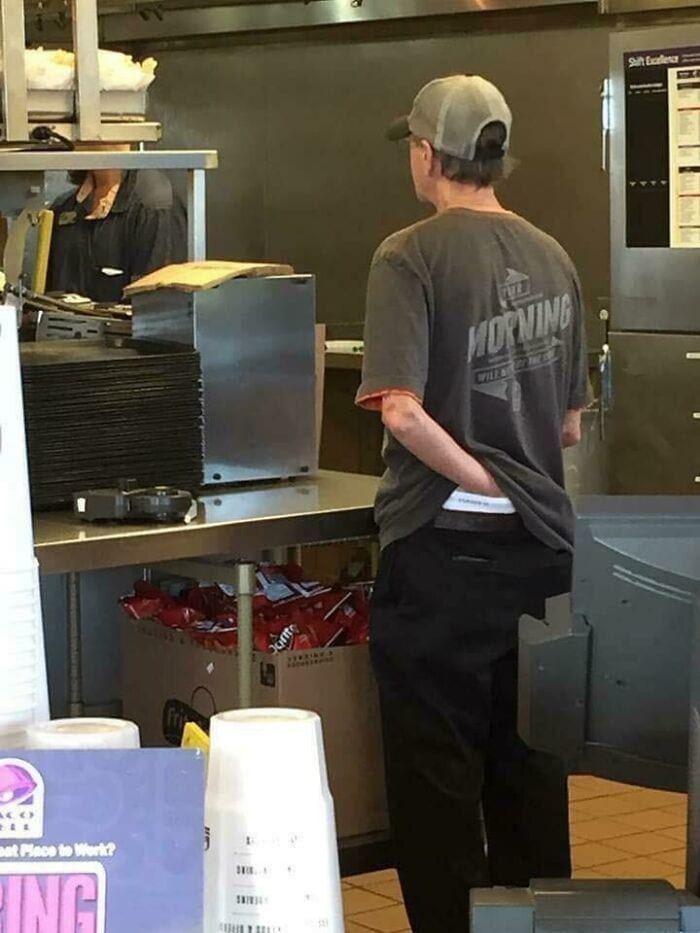
And said, contamination can occur anywhere down the supply chain. Employee mishandling or bad hygiene by cooks is a constant factor that most health inspectors have to deal with. Things like the one above are shockingly incredibly normal and mainstream.
A tick
Infants, pregnant women, the sick, the elderly, and people with low defenses are particularly vulnerable to contaminated foods. They are high-risk members of the population that can experience powerful side-effects and symptoms. Things tend to sneak into the preparation, things like ticks rife with lime disease and microbes-
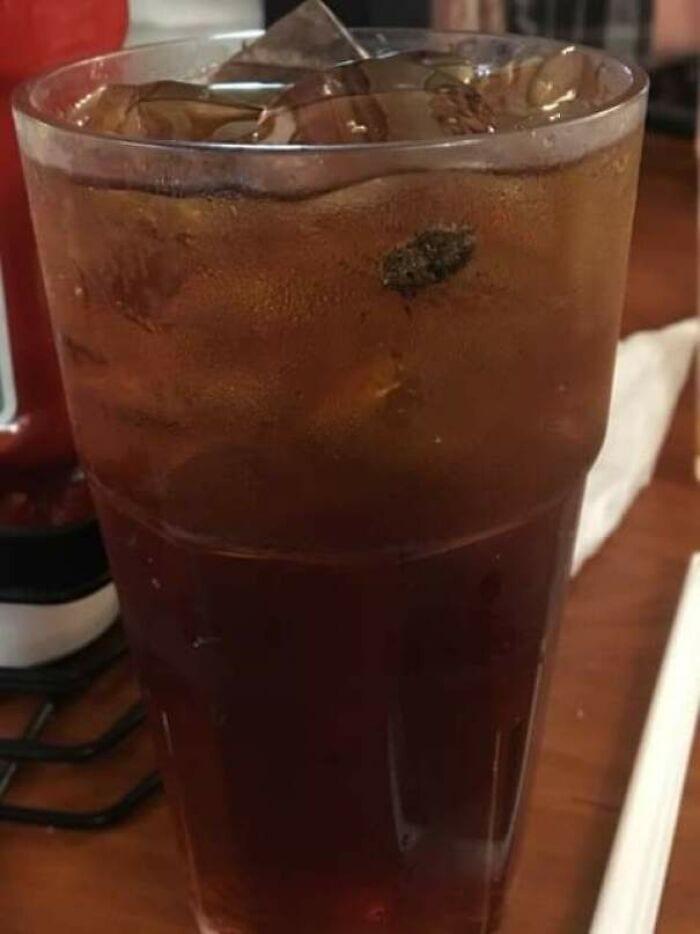
Did you know that most meals have at least 3% of insect protein in them? Chocolate, for example, no matter how sanitary the place it was manufactured, has large amounts of insect parts embedded in them. It’s completely natural, and the FDA even has a chart on how much bug a product has to have before the company needs to disclose it.
Unsanitary
And it’s not just in a restaurant, like the one below, but food contamination can take place anywhere in the supply chain. Food supply chains are complex beasts – consider the cycle from farm production, storage, transport, distributions, and dozens of other links before they reach a consumer. And surfaces where foods are prepared, are often incredibly tarnished.
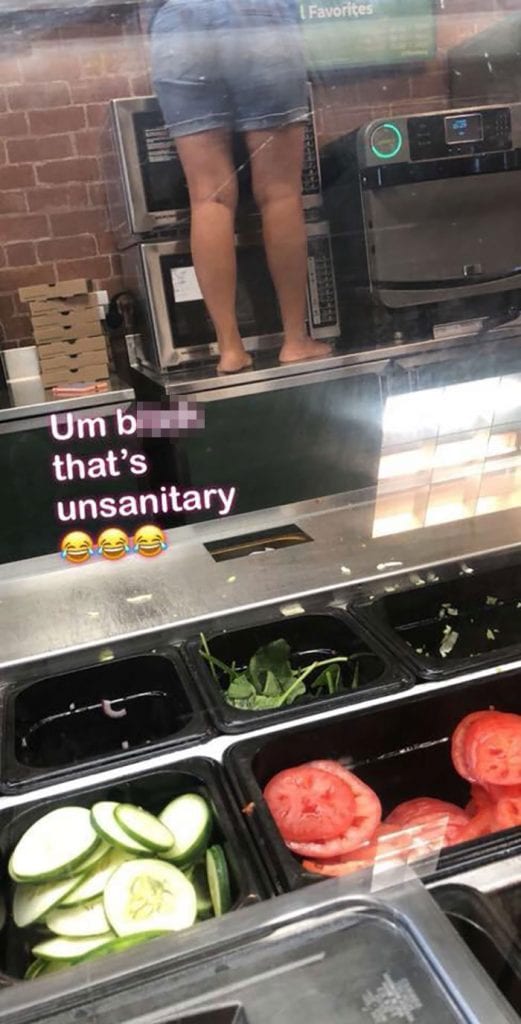
Oddly enough, one of the most unsanitary chain-stores is Subway. Due to its “Fresh Promise,” most products have to be exposed to the elements. This, in turn, makes them susceptible to unsanitary conditions. Oh, and employees, like the one above, don’t really help either.
Hep A
Globalization, in particular, makes food safety all the more essential and complex. Trade between nations and our need for exotic new tastes has increased the possibility of outbreaks and bacteria proliferation. Outbreaks occur quite often, as a matter of fact. Hep-A is a huge issue in the restaurant trade.
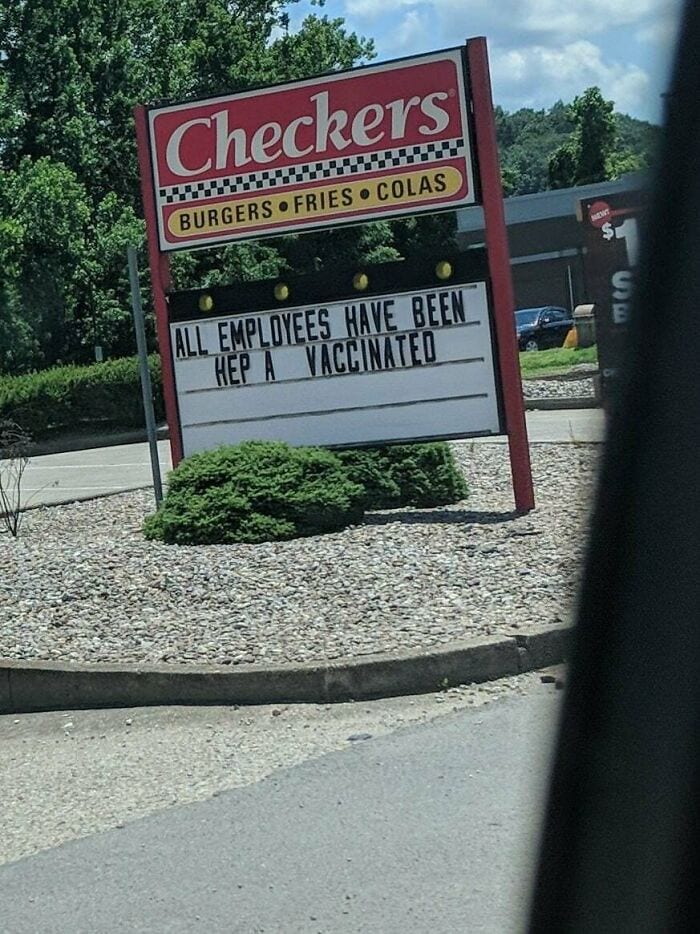
Restaurant food is a common source of the hepatitis A virus (HAV). This is a highly infectious virus that attacks the liver and other organs. In fact, outbreaks of HAV infection linked to bistros and eateries have been increasing in numbers in recent years.
Overdose
Right now, thankfully, due to education, health inspections, and technologies, the trade has never been safer. There’s a lot of collaborative effort being made by civil society and different government departments and agencies to improve food health, particularly in fast food chains.
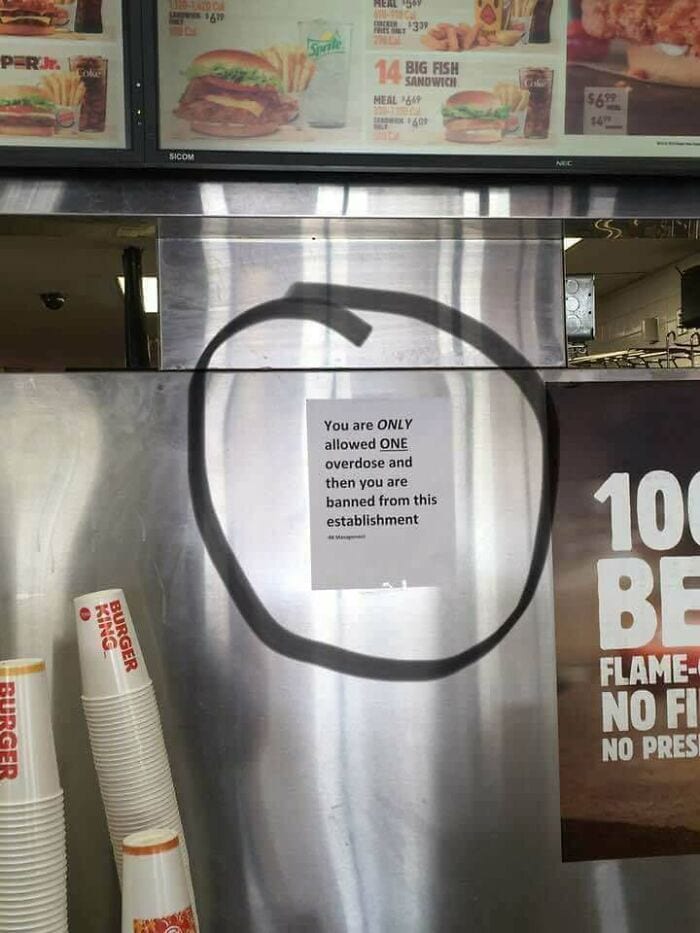
That above is less a statement on bad sanitation and more of a highlight on why it’s important to have someone proofread your writing. Let’s be honest it’s an honest mistake. A funny, honest mistake. A very funny mistake and use of words.
Sludge
Food contamination, like the one below, doesn’t just affect our health, but our pocket. Breaks in the supply chain due to a contaminant or the shutting of a restaurant due to bad hygiene affect the economy in both developed and developing countries. Oh, and that scene below, that’s in Chicago, in case you thought it was someplace less developed.
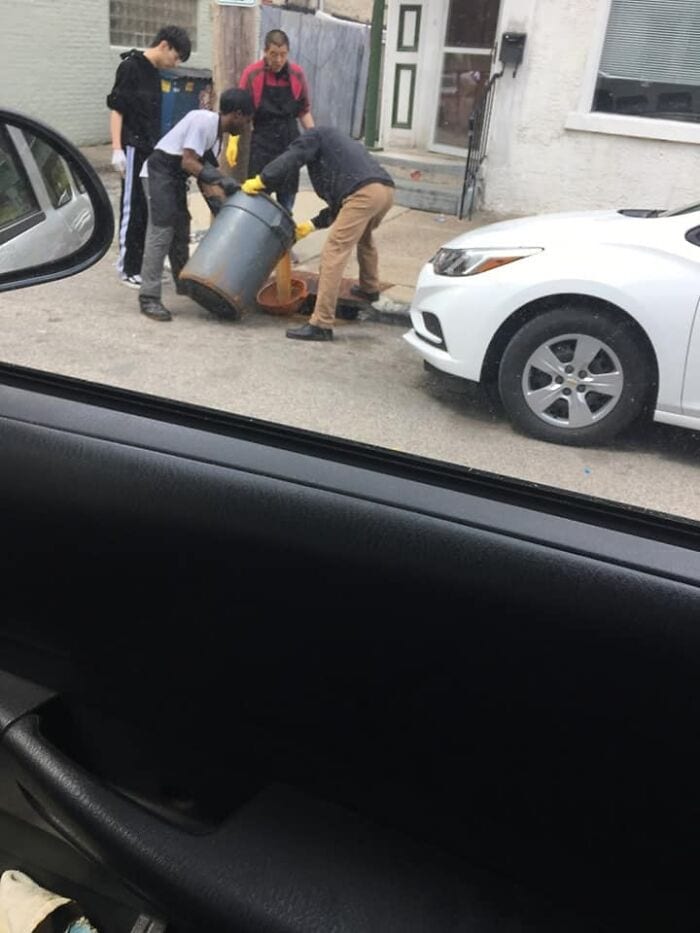
Developing countries have the greatest amount of health violations in the food industry. Things like that picture above are commonplace in some restaurants around the globe. It’s important to note that it’s not everyone that is unsanitary, just a few.
Butter
The downside is that harmful bacteria, due to our meddling and our desire to improve food safety standards, are becoming more and more resistant to drugs, which is a huge problem due to more dangerous strains evolving. But what we really care about is that our bread is buttered. But, did you know that butter – at least the one we’re accustomed to – isn’t even original butter. These same treatments changed butter which was once the carrier of huge bacteria payloads.
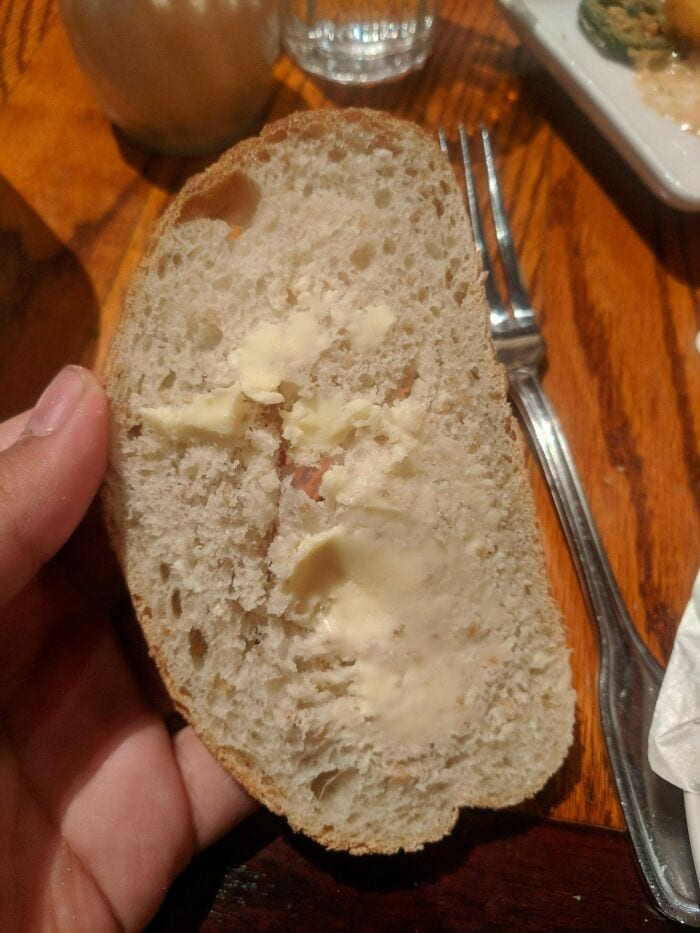
This is a global concern as many places, due to the overuse of antimicrobials, particularly in animal husbandry, are unleashing drug-resistant, highly infectious, virulent super bacterias. Super viruses can put supply chains in check and create vast outbreaks of terminal diseases. And for a period, their transmission method of choice was in butter.
Salsa
People should, in essence, make informed and well-balanced food choices. The public has to exhibit a certain amount of intelligence when picking their food and places to eat in. It’s critical. And never return unused food. It may be eco-friendly, but it is extremely unsanitary.
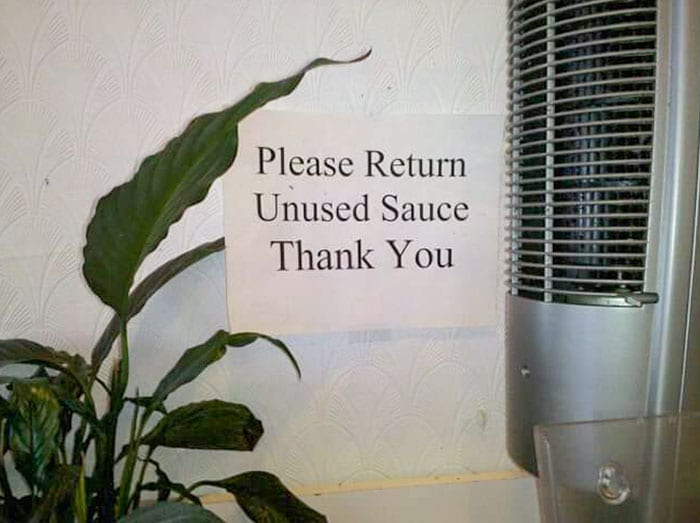
Using provided food information, FDA-approved brands, and reading up on labeling is the first of many acts the public can do to combat food contamination. The consumer is the last and oftentimes most important link in a supply chain. That’s why most restaurants prefer packed sauces… It’s an FDA requirement.
Eat Here
Also, although they say “snitches end up in stitches,” it’s important to inform your local authority when something of that nature, like the example form down below, actually takes place. Cross-contamination is a huge concern and one that should be in everyone’s line of sight. Some restaurants like the one below seem unaware of that fact. Or what cross-contamination even means.
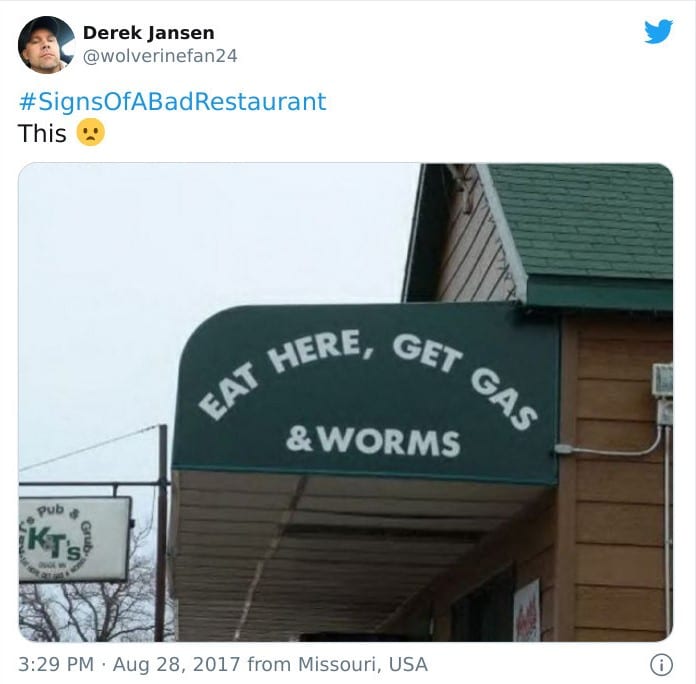
Would you even eat at a place that advertises food, gas, and worms on the same line? Even if you feel ill after going to a restaurant, it’s critical to contact your local health inspectors and tell them. In many cases, the restaurant is unaware, and the food was contaminated somewhere else in the supply chain. But it’s all our responsibility, and maybe after reading this, more meals made at home seem to be a safer option.
